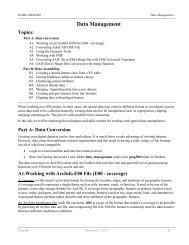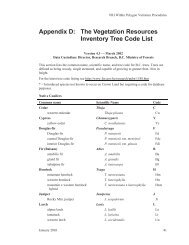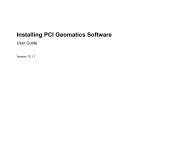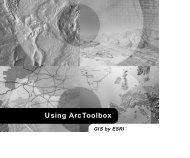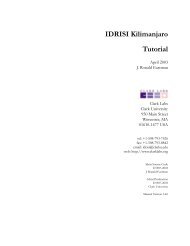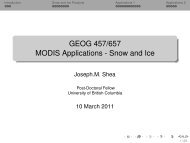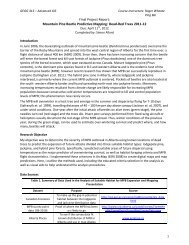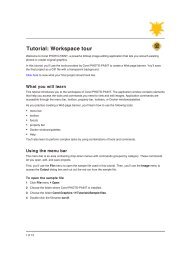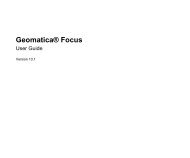Understanding Map Projections
Understanding Map Projections
Understanding Map Projections
You also want an ePaper? Increase the reach of your titles
YUMPU automatically turns print PDFs into web optimized ePapers that Google loves.
TWO-POINT EQUIDISTANT<br />
point represents the correct great circle length but<br />
not the correct great circle path.<br />
LIMITATIONS<br />
Does not represent great circle paths.<br />
USES AND APPLICATIONS<br />
Used by the National Geographic Society for maps of<br />
Asia.<br />
The first point is 117°30' W, 34° N, and the second point is<br />
83° W, 40° N.<br />
Adapted form used by Bell Telephone system for<br />
determining the distance used to calculate long<br />
distance telephone rates.<br />
DESCRIPTION<br />
This projection shows the true distance from either<br />
of two chosen points to any other point on a map.<br />
PROJECTION METHOD<br />
Modified planar.<br />
POINTS OF CONTACT<br />
None.<br />
LINEAR GRATICULES<br />
Normally none.<br />
PROPERTIES<br />
Shape<br />
Minimal distortion in the region of the two chosen<br />
points, if they’re within 45 degrees of each other.<br />
Increasing distortion beyond this region.<br />
Area<br />
Minimal distortion in the region of the two chosen<br />
points, if they’re within 45 degrees of each other.<br />
Increasing distortion beyond this region.<br />
Direction<br />
Varying distortion.<br />
Distance<br />
Correct from either of two chosen points to any<br />
other point on the map. Straight line from either<br />
Supported map projections• 91




